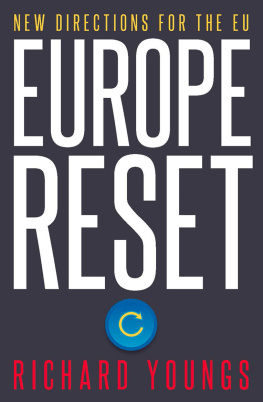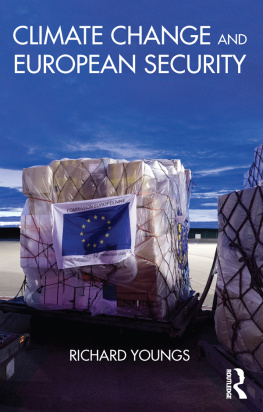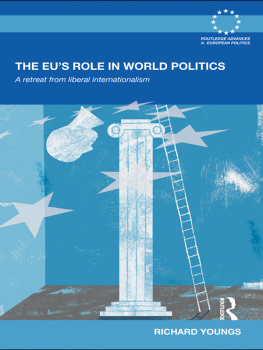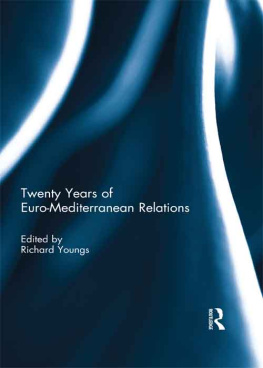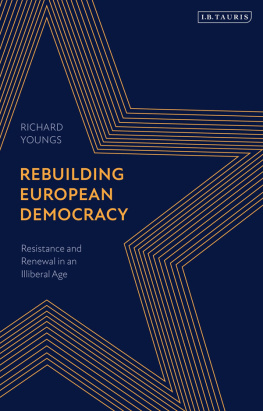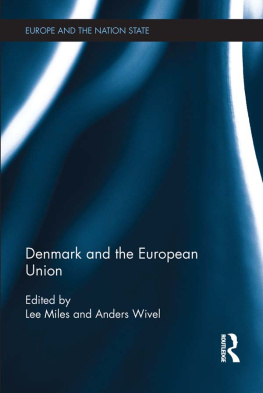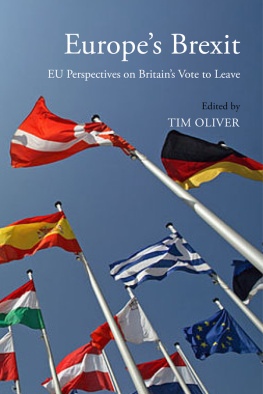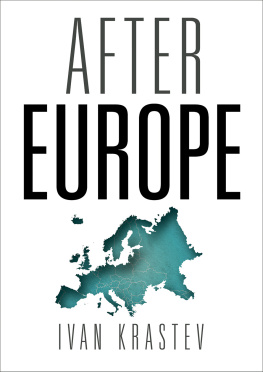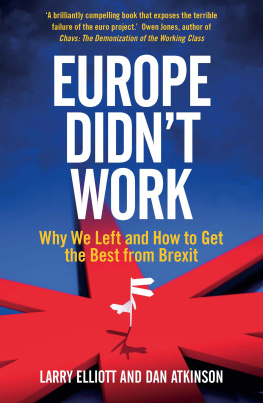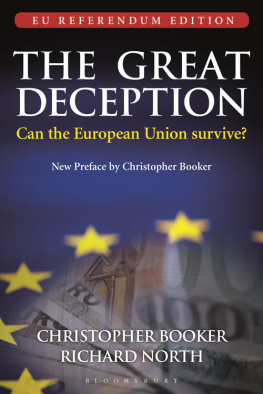richard youngs is a senior fellow at Carnegie Europe and a professor of international relations at the University of Warwick. He has authored eleven previous books, including, most recently, Europes Eastern Crisis: The Geopolitics of Asymmetry (2017), The Puzzle of Non - Western Democracy (2015) and Europe in the New Middle East (2014).
Since the economic recession of 2008, the EU has been hit by a series of crises, most recently the UKs decision to leave the union following the Brexit referendum. In light of this, questions have been raised about the need to reform the whole model of European integration, with the aim of making the union more flexible and more accountable.
In this book, Richard Youngs proposes an alternative vision of European cooperation and shows how the EU must reinvent itself if it is to survive. He argues that citizens should play a greater role in European decision-making, that there should be radically more flexibility in the process of integration and that Europe needs to take a new, more coherent, approach to questions of defence and security. In proposing this model for a reset version of Europe, Youngs reinvigorates the debate around the future of Europe and puts forward a new agenda for the future of the EU.
An original and provocative contribution to the continuing debate about the future of Europe. The EU at the time of writing seems to be recovering from the succession of problems created by the financial crisis and its impact on the euro. As Richard Youngs stresses, much more is needed. Output democracy is not enough reform must be driven by citizenship engagement and activism, and on a wide scale.
Lord Anthony Giddens
The European Union has muddled through many crises in recent years. If it is to survive in the age of populism, and indeed to thrive, it must urgently rethink its purpose and methods. EU leaders would do well to read Richard Youngss book. He is surely right in arguing that the EU needs much more flexibility in what it does, and much greater democratic legitimacy for it.
Anton La Guardia, Deputy Foreign Editor at
The Economist and co-author of Unhappy Union
In a bold attempt to jumpstart new thinking on the future of the EU, Richard Youngs is not afraid to challenge conventions. He rightly encourages leaders to base Europes future course on European citizens own compasses. Let us hope his book leads to more creative solutions to the EUs democracy challenge.
Marietje Schaake, MEP
While their governments struggle with multiple crises, European citizens feel they run into the wall of Brussels consensus. In this stimulating book, Richard Youngs rightly diagnoses the need to reconnect democratic civic energies with innovative policy-making for a continent that is ready for a new politics.
Luuk van Middelaar, author of The Passage to Europe
Published in 2018 by
I.B.Tauris & Co. Ltd
London New York
www.ibtauris.com
Copyright 2018 Richard Youngs
The right of Richard Youngs to be identified as the author of this work has been asserted by the author in accordance with the Copyright, Designs and Patents Act 1988.
All rights reserved. Except for brief quotations in a review, this book, or any part thereof, may not be reproduced, stored in or introduced into a retrieval system, or transmitted, in any form or by any means, electronic, mechanical, photocopying, recording or otherwise, without the prior written permission of the publisher.
References to websites were correct at the time of writing.
ISBN: 978 1 78831 057 4
eISBN: 978 1 78672 320 8
ePDF: 978 1 78673 320 7
A full CIP record for this book is available from the British Library
A full CIP record is available from the Library of Congress
Library of Congress Catalog Card Number: available
Text design, typesetting and eBook by Tetragon, London
Contents
Preface
In recent years the European Union (EU) has often given the impression that it is coming apart at the seams. Problems have piled up, revealing discord, policy failure and public exasperation. Economic recession has been followed by terrorist attacks, a refugee surge, the Brexit vote and a wave of nationalist populism. In 2017, the mood has shifted towards a sense of optimism that the EU is finally moving beyond these multiple crises. Yet the Union is still in fragile health. In his inauguration speech in May 2017, French president Emmanuel Macron acknowledged that the EU must now be reformed and relaunched. Few would disagree with him. The EU has been bombarded with so many problems during the last decade that the need for change appears self-evident. But what type of reform is really needed? And is a major overhaul of the EU actually possible? If European leaders believe an era of renewed unity and momentum is now beginning, will they take the opportunity for such root-and-branch reform?
Governments and EU institutions have been talking about and promising reform ever since the economic crisis began in 2008, and indeed even before that. In practice, they have declined to support any radical change to the existing model of EU integration. At a supposedly crucial summit in Bratislava in September 2016, billed as a meeting where a new course for European integration would be plotted, leaders spent a weekend talking earnestly about their desire to reconnect with ordinary people yet they did so locked inside a castle, on a hilltop, cordoned off from the city and its inhabitants. They then posed on a Danube cruise ship, ostensibly to symbolise that they were all together in the same boat. Apocryphally, the boat had to return to shore prematurely: low water levels meant it could not make its journey. And indeed, six months later, at their March 2017 summit celebrating the sixtieth anniversary of the Treaty of Rome, governments categorically failed to deliver on the promised EU relaunch.
In this book, I propose an ambitious reform agenda that would change the core model of EU integration. I stake out a position that is hopeful and empowering, but also realistically cautionary. On the one hand, I adopt a positive stance in suggesting that European integration can prosper. I do this in very deliberately counter-intuitive contrast with the widespread fatalism stoked by Europes crisis years. I explore how the EU can pick up the pieces from a calamitous decade of successive difficulties, and also how it can adjust to a less benign, more atavistic world order.
On the other hand, I stress that the magnitude of change required is considerable. The spirit of European cooperation and solidarity can only be replenished if EU governments and institutions are willing to contemplate fundamentally new ideas. The books broadly constructive stance is offset by a warning that complacency is as serious a danger as self-destructive gloom. My contention is that if the EU is to thrive it must be radically rethought. A redesigned integration project must be based on Europe as it is, not on Europe as we might wish it to be and this requires profound adjustment of the European project.
The book tries to break through the standard pro-European versus anti-European debate. In this sense, I suggest there are twin dangers: if putative disintegration is one, governments lack of adaptability in how they pursue European cooperation is another. While European leaders have been forced into short-term crisis management by the succession of emergencies they have faced in recent years, these crises actually intensify the need for structural adaptation of the integration model the kind of change that is still nowhere near being realised.

